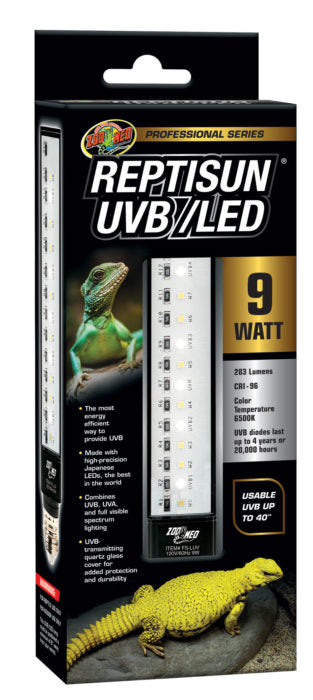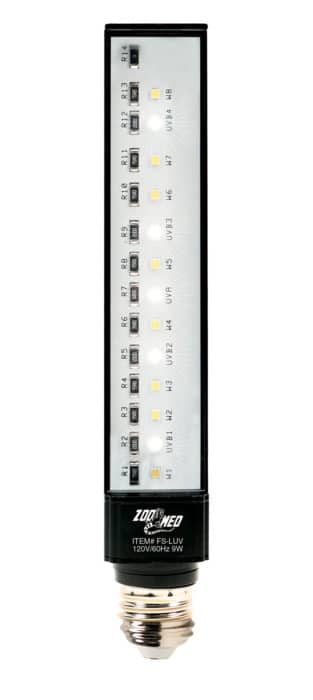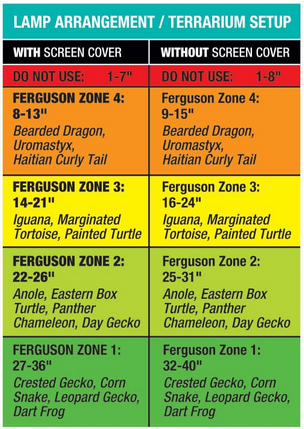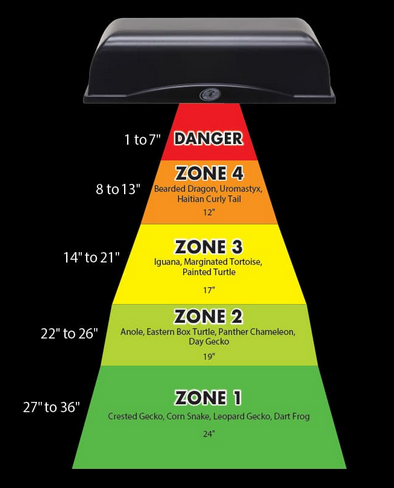Photo Disclaimer
Description
- The most energy-efficient way to provide UVB
- Made with high-precision Japanese LEDs, the best in the world
- Combines UVB, UVA, and full visible spectrum lighting
- UVB-transmitting quartz glass cover for added protection and durability
he Complete Electromagnetic Spectrum

UVB
UVB wavelengths along with proper temperature (usually additional heat), are responsible for vitamin D3 production in reptiles. However, only some UVB wavelengths (from 290-315 nm) help synthesize Vitamin D3. The Reptisun® UVB/LED bulb emits UVB wavelengths from 295 nm to 320 nm.
UVA
UVA is part of reptile vision, so without it they’re colorblind! A portion of UVA wavelengths (from 320nm-335nm) also help regulate Vitamin D3 production and let reptile’s body’s know when they’ve created enough. The Reptisun® UVB/LED bulb emits UVA wavelengths from 320nm-335nm and from 355nm-395nm.
VISIBLE LIGHT
Visible light is critical to reptiles as it is for humans. The amount of visible light a bulb emits is measured on a temperature scale corresponding to the warmth of the light relative to color. A bulb emitting light between 5,000 and 7,000 Kelvin most closely resembles the sun. The Reptisun® UVB/LED has a color temperature of 6,500 Kelvin.
INFRARED
The infrared spectrum provides heat for reptiles. This is critical for Vitamin D3 production and for maintaining body temperature (since reptiles are ectothermic). With the combination of the Reptisun® UVB/LED with a Basking Spot Lamp, you will achieve a more natural visible light with infrared for efficient deep heating.





